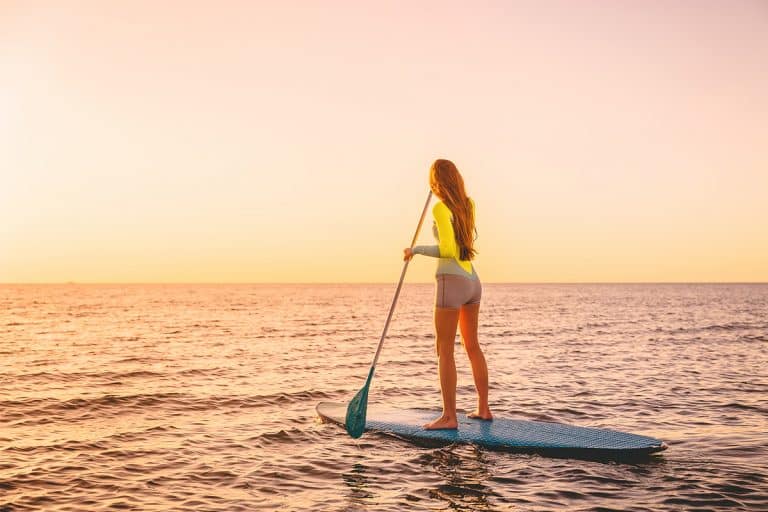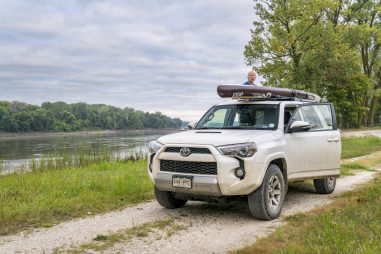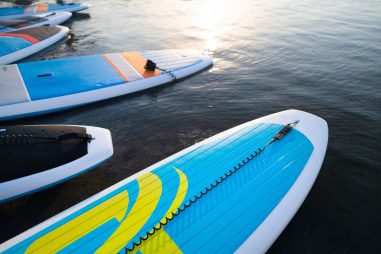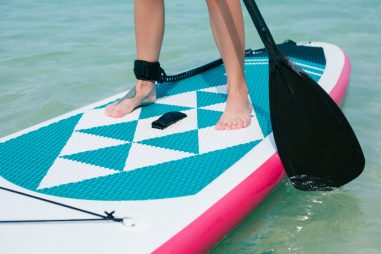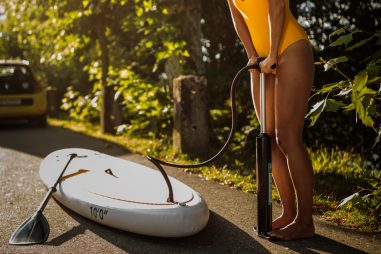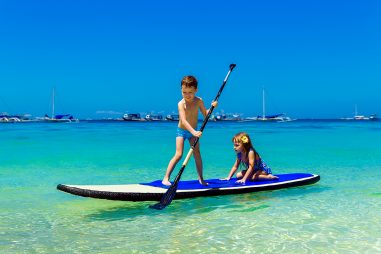One of the reasons why stand up paddle boarding became popular is because it is all-inclusive. It doesn’t matter how old you are, your gender, or the size of your jeans, you can easily learn how to SUP. This makes it more enjoyable because you can do it with your friends, family, and even your pets!
Is Stand Up Paddle Boarding Easy or Difficult?
Stand up paddle boarding does have its difficulties but don’t let them discourage you because compared to other water activities or board sports, SUP is relatively easy.
One of the many reasons why the sport became popular so fast is the ease of learning it. SUP is, in fact, so easy that no matter what your age is, how fit you are, or your level of skill, you can definitely learn stand up paddle boarding.
As with any sport, SUP does have a learning curve. But you can easily get started on the sport with proper training under the supervision of a certified and qualified SUP instructor.
How Difficult Is Stand Up Paddle Boarding?
Compared to other water activities where you need to control a giant kite while you balance yourself on a board, stand up paddle boarding is a walk in the park.
Balancing on a stand up paddle board on the water can admittedly be difficult, especially for beginners, but the more time you spend in the water, with proper gear and training, you can easily learn the proper stance and the movements to get you moving on the water.
Sure, it can get difficult in the beginning but with practice and proper skills training, you’ll be paddling the water like second nature in no time.
Is Stand Up Paddle Boarding Safe or Dangerous?
You have to acknowledge the fact that any and all sport, whether performed on land, water, and air, does carry its risks. The same goes with stand up paddle boarding. While the sport is easy to learn and do and is considered to be safe, it does have the potential for danger, especially when pursued carelessly.
SUP is a generally relaxing and therapeutic sport that boasts of amazing health benefits. However, if an inexperience paddler goes at it without knowing the proper safety precautions, they can put themselves and others in danger.
To make sure that you will be safe in the water while stand up paddle boarding, remember these tips.
- Always wear your lifejacket: It doesn’t matter if you happen to be the best swimmer in the world, or it’s too hot, or it is so uncomfortable to have to move with another layer of clothing, or the water is shallow, wear your life jacket. It doesn’t even matter if you’re the best paddler around; wear it. Never take it off while you are in the water. Your lifejacket is your friend.
- Learn and understand the weather conditions: It’s not enough that you know how to swim or that you can paddle quickly, one of the skills that you need to learn if you want to be a champion paddler is to know and understand the weather conditions. You should be able to distinguish the change in the weather or the weather patterns as these will give you clues if it is safe to go out into the water.
- Take it slow: If you are new to the sport, it is understandable that you would get so excited that you want to practice every day no matter what the weather condition is, how fit you are, or how skillful you are. While practicing is good to improve your skills, you should know your boundaries. If it is too windy or if the waves are too big, it is not the best time to paddle. If you are a beginner, don’t try to paddle too far out into the ocean that it would be hard for you to swim back to shore should you encounter an accident. Take your practice one day at a time and make sure to do it safely.
- Find the right equipment: You only need minimal equipment in SUP, so it is better to find the ones that would work best for you. Since there are different kinds of SUP boards, you should choose the one that would best serve your riding goals and riding style. You should also ask a professional regarding the specifications of the paddle that will suit your body type and height.
- Always paddle board with a friend: Sure, SUP can be a solo sport. But that doesn’t mean that you should set out into the ocean alone and without the supervision of another person. It is an amazing feeling to have to paddle out on your own but knowing that someone is there to look out for you and to supervise your safety and progress is an even better feeling.
How Much Weight Can a Stand Up Paddle Board Hold?
On average, a stand up paddle board can hold a person (or two) weighing anywhere between 200 to 300 pounds or 90.7 to 136 kilograms. If you weigh more than that, then fret not, because there are boards that can hold a person that is 500 pounds or more.
However, not all paddle boards are created equal. SUP boards are manufactured weighing around 15 to 40 pounds. Their weight affects how much load they can hold.
Is There a Weight Limit for Stand Up Paddle Boarding?
There is a weight limit for stand up paddle boarding. However, the limit varies and there are many aspects that factor into the maximum weight that a paddle board can hold.
These aspects include:
- How much the paddle board weighs
- How much the paddler weighs
- All the gear that will be loaded or used on the paddle board (this includes the paddle itself)
- Passengers that the paddler will carry (this may be another person or a pet)
All these factors will account for the overall weight that will be carried by the board. Some boards are manufactured to carry more weight than others.
SUP boards that are shorter, narrower, and thinner are designed to carry less weight and have lower weight limits. On the other hand, if the board is wider, longer, and thicker, it can carry higher weight limits.
For beginners, it is always best to choose the stand up paddle board for your size and weight because this can help you in balancing, maneuvering your board, and paddling.
The good news is that there are manufacturer’s recommendations on how much weight a paddle board can carry. Make sure to never exceed the weight limit set upon by the manufacturers, otherwise, you will have a hard time on your board.
How Should a Beginner Stand Up Paddle Board?
If you are now sold on trying out SUP, then here are some tips that you should keep in mind as a SUP beginner.
- Get the right equipment
- Board: Find a board that is wide, thick, and long. This type of board is perfect for beginners because they keep you balanced and steady.
- Paddle: Follow the rule of thumb when getting a paddle—make sure that the paddle is around 25 centimeters or 10 inches longer than your height. This will help your grip and traction.
- Leash: This will connect you to your board so make sure that the leash is as long or a little bit shorter than your board.
- Check the weather conditions: Your understanding of the weather will improve along with your skills but as a beginner, you should only set out if you are sure that you can handle the weather, the waves, and the current. For first-time paddlers, it is best to learn on flat water.
- Learn how to paddle correctly: Pay attention to how you handle your paddle because the correct paddling technique can increase your paddling speed. Aside from that, it will help you control and maneuver your board better.
- Learn the proper stance: If you happen to be an experienced surfer but a beginner paddler, you may have to unlearn some things. You cannot use the surfing stance while on the SUP board. Make sure to keep your feet parallel and shoulder-width apart.
Do You Need Lessons for Stand Up Paddle Board?
It is not required to take SUP lessons but if you have zero experience, it is still better to learn from a pro.
While it is easy to figure out what goes on with the sport, it’s good to have someone properly teach you the basics of getting on the board, the proper stance, paddling, and controlling the board. It is also better to learn SUP safety from a professional instructor.
Happy paddling!

